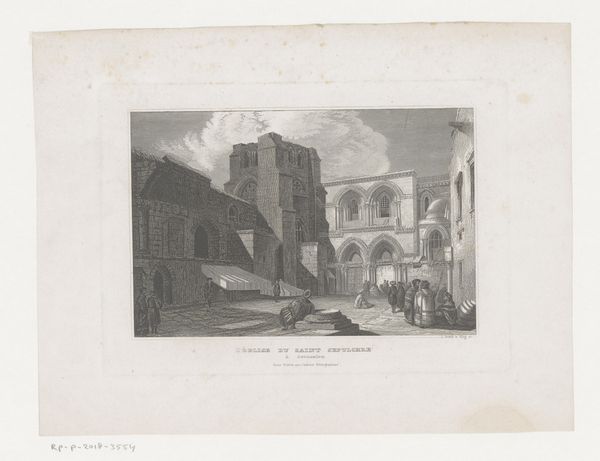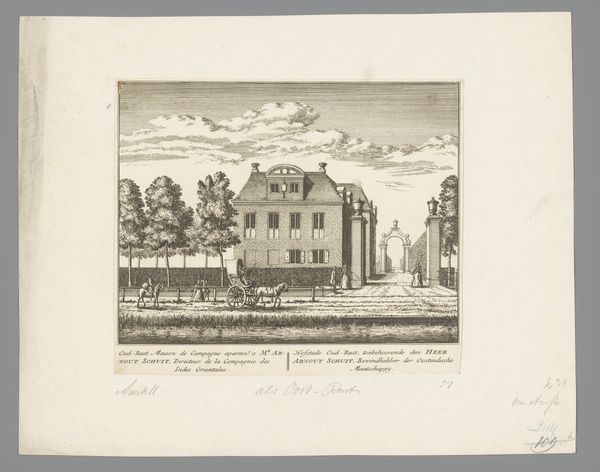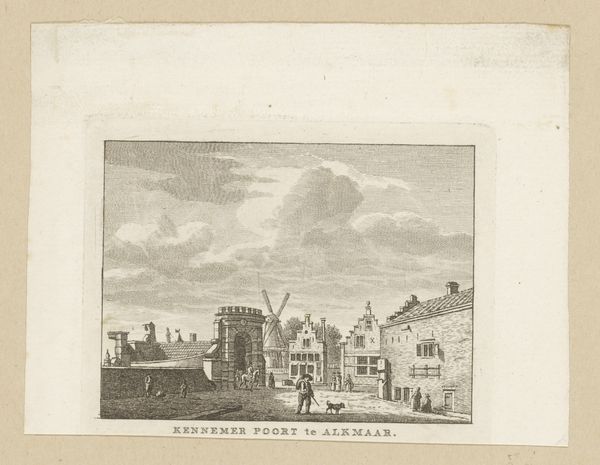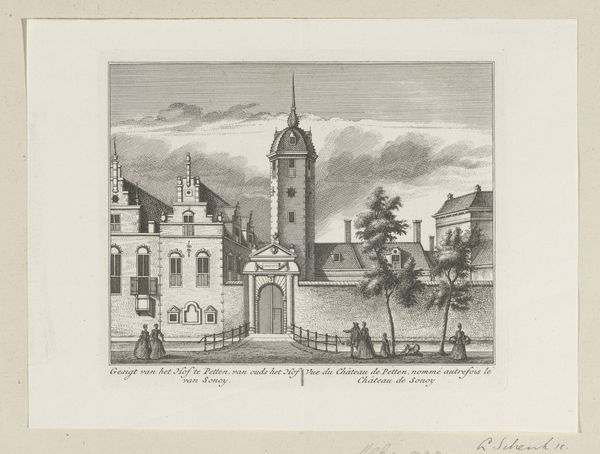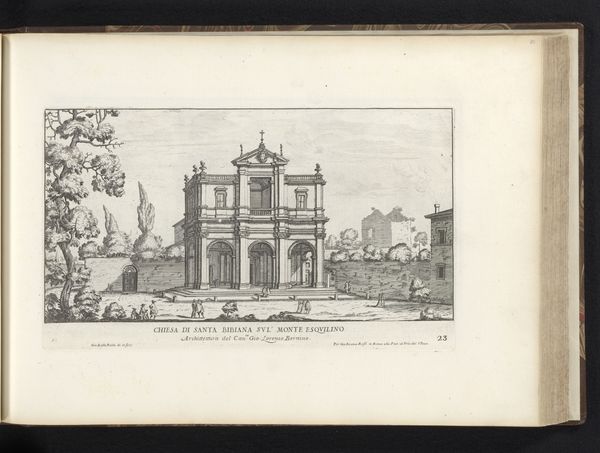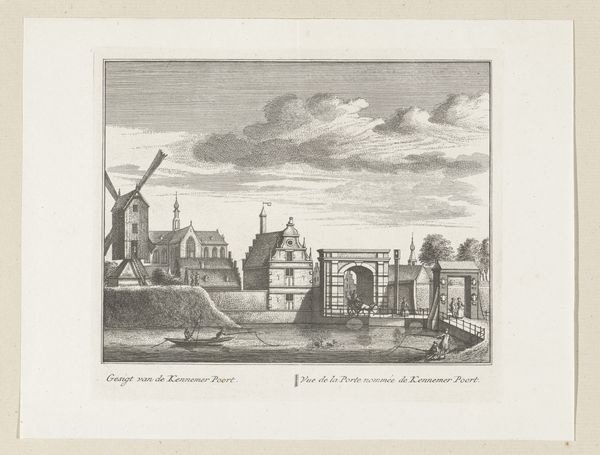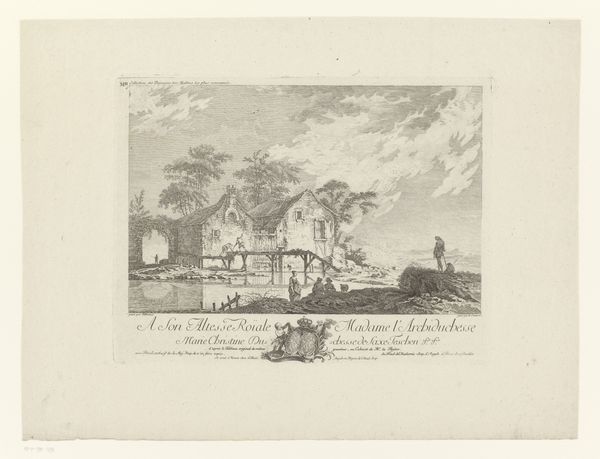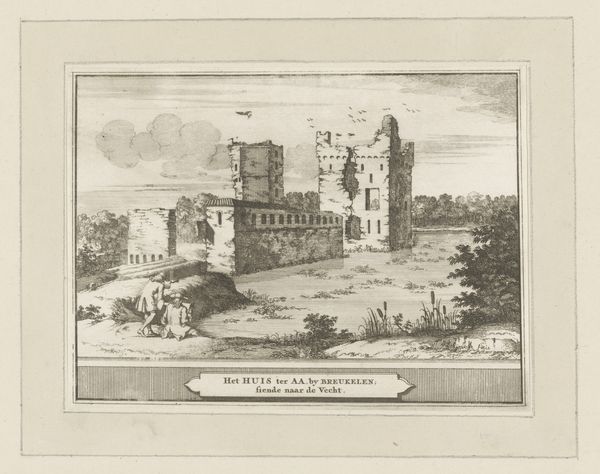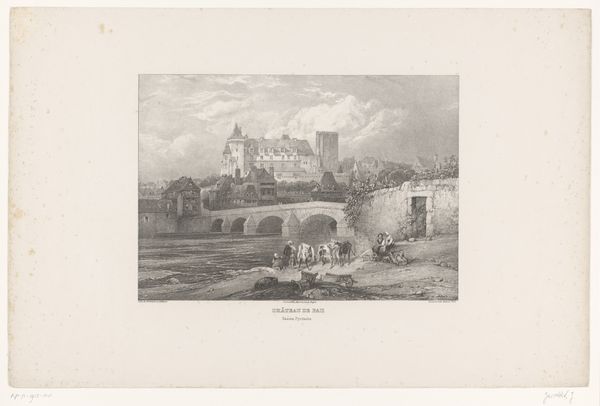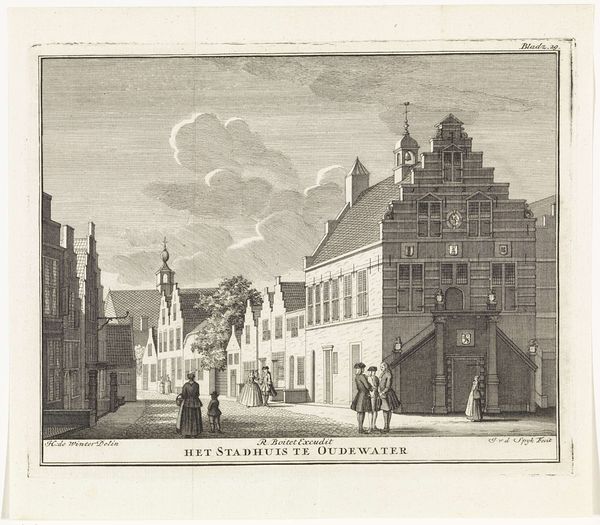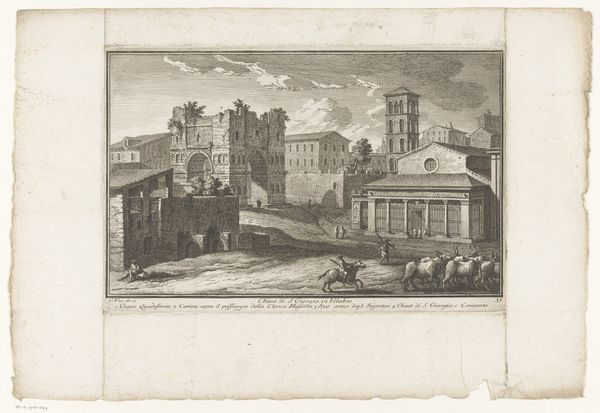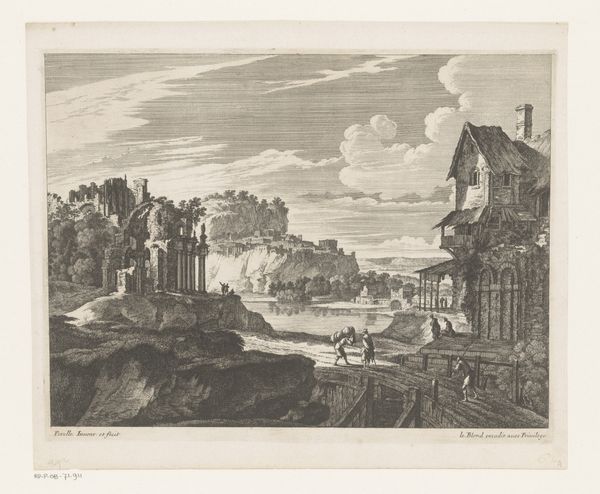
print, engraving, architecture
#
baroque
#
dutch-golden-age
# print
#
landscape
#
cityscape
#
engraving
#
architecture
Dimensions: height 173 mm, width 205 mm
Copyright: Rijks Museum: Open Domain
Editor: So, this engraving, "Gezicht op Kasteel Rosendael vanaf de binnenplaats," created in 1718 by Jan (I) Smit, has a formal, almost stage-like quality. The architecture is precise, but the figures seem a bit stiff. What strikes you most about this piece? Curator: What I see is a snapshot of power relations meticulously rendered in ink. The manicured gardens, the imposing architecture – it all speaks to the control the elite had over their environment and, by extension, the people connected to it. The Dutch Golden Age wasn’t golden for everyone; how does this image, in its depiction of wealth and order, participate in the narrative of colonial exploitation? Editor: Colonial exploitation? I hadn't considered that perspective initially. The figures just seemed like elements of a cityscape. Curator: Look closely at how they are positioned, their relationship to the castle and grounds. Are they simply "elements," or are they positioned to highlight the landowners' power and control? Their passive observation from their location in the gardens makes me consider questions around social hierarchy at this historical time. Does the art serve to reflect or mask this dominance? How much of this 'Golden Age' came on the back of those unseen or deliberately obscured? Editor: That makes me reconsider the whole scene. The gardens become a kind of curated display of dominance, and the figures become props. Curator: Precisely. And understanding that unlocks deeper conversations about land ownership, resource extraction, and the visual strategies employed to normalize an unequal society. Even in a seemingly benign landscape, the politics of representation are always at play. Editor: I never thought I’d see a quiet garden scene this way, but now the engraving speaks volumes about the relationship between power, land, and people. Thank you for offering your insight. Curator: My pleasure. It's through these kinds of dialogues that we start to understand art history as an active engagement with the past, rather than just a passive observation of it.
Comments
No comments
Be the first to comment and join the conversation on the ultimate creative platform.

